- Analytics
- 11 min read
- August 2023
5 Powerful Strategies for Data-Driven Decision Making
Data has become the most valuable asset in today's world, and integrating data analytics has further heightened its significance. Organizations need to utilize data to make well-informed decisions to succeed and grow. Data-driven decision-making (DDDM) is not just a trendy term but a crucial approach that enables businesses to flourish in a highly competitive environment.
This article explores the five powerful strategies businesses can employ to fully harness the power of data, enabling them to make decisions that are not only informed but also innovative and effective.
By exploring tools, techniques, and best practices, we'll uncover how a data-driven approach can benefit businesses of all sizes.
From identifying quality data sources to building customer-centric marketing campaigns, we'll provide a comprehensive guide to empowering your success through data-driven decision-making.
Let's dive into the core of DDDM and discover its benefits to organizations seeking to leverage data in their decision-making processes.
What is data-driven decision-making (DDDM)?

Data-driven decision-making (DDDM) is the process of using data to inform and enhance decision-making across various aspects of life, from business and government to personal finance.
It involves an iterative process of collecting, analyzing, interpreting, and utilizing data to make well-informed business decisions.
The importance of DDDM in today's world
With the proliferation of data in our digital era, DDDM is becoming increasingly essential. It allows organizations and individuals to:
1. Make better marketing decisions
Companies can create targeted and effective marketing strategies by further analyzing data on customer behavior.
2. Improve operational efficiency
Identifying areas of waste and inefficiency through data can lead to streamlined operations, organizational efficiency, and cost savings.
3. Make informed investments
Evaluating risks and potential returns through data analysis helps make prudent investment choices.
4. Develop customer-centric products and services
Using data to understand customer needs enables the development of products and services that resonate with the target audience.
Key steps involved in data-driven decision-making
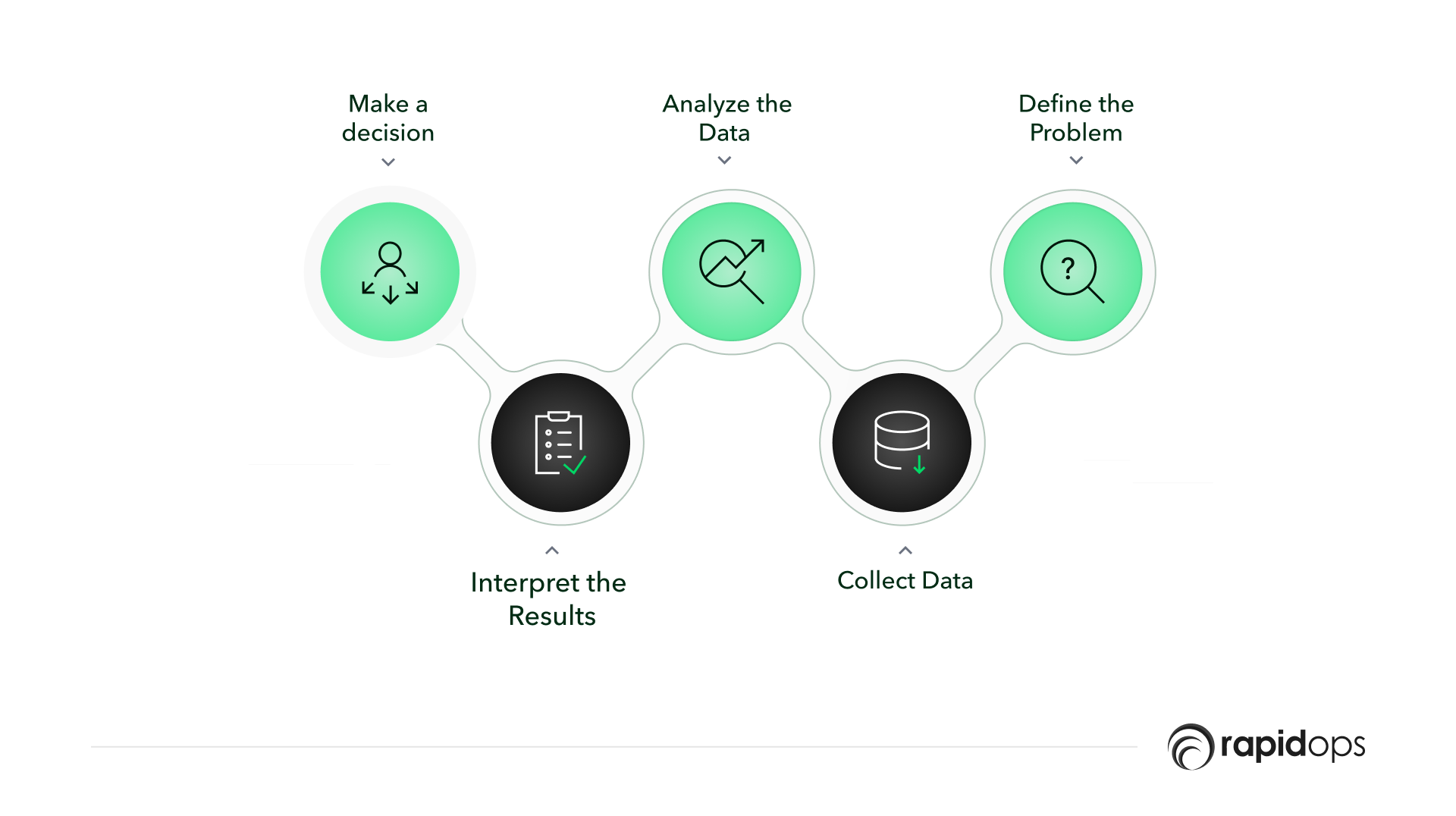
Breaking down the process, let's uncover the essential stages that constitute data-driven decision-making.
1. Define the problem
Clearly defining what you are trying to achieve sets the stage for decision-making. Understanding specific goals and objectives is paramount.
2. Collect data
Gather relevant data from various sources, such as customer surveys and feedback, financial records, and market research. Ensuring data quality and relevance is crucial.
3. Analyze the data
Utilize statistical and machine learning techniques to identify patterns and trends in collected data. This step transforms raw data into actionable insights.
4. Interpret the results
Drawing on expert judgment, interpret the analyzed data to make sense of patterns, draw conclusions, and identify the best course of action.
5. Make a decision
The final step involves making a decision, informed not just by the data but also by experience and expertise. This ensures that decision-makers make a balanced and well-thought-out decision.
Why is data-driven decision-making (DDDM) important for businesses?
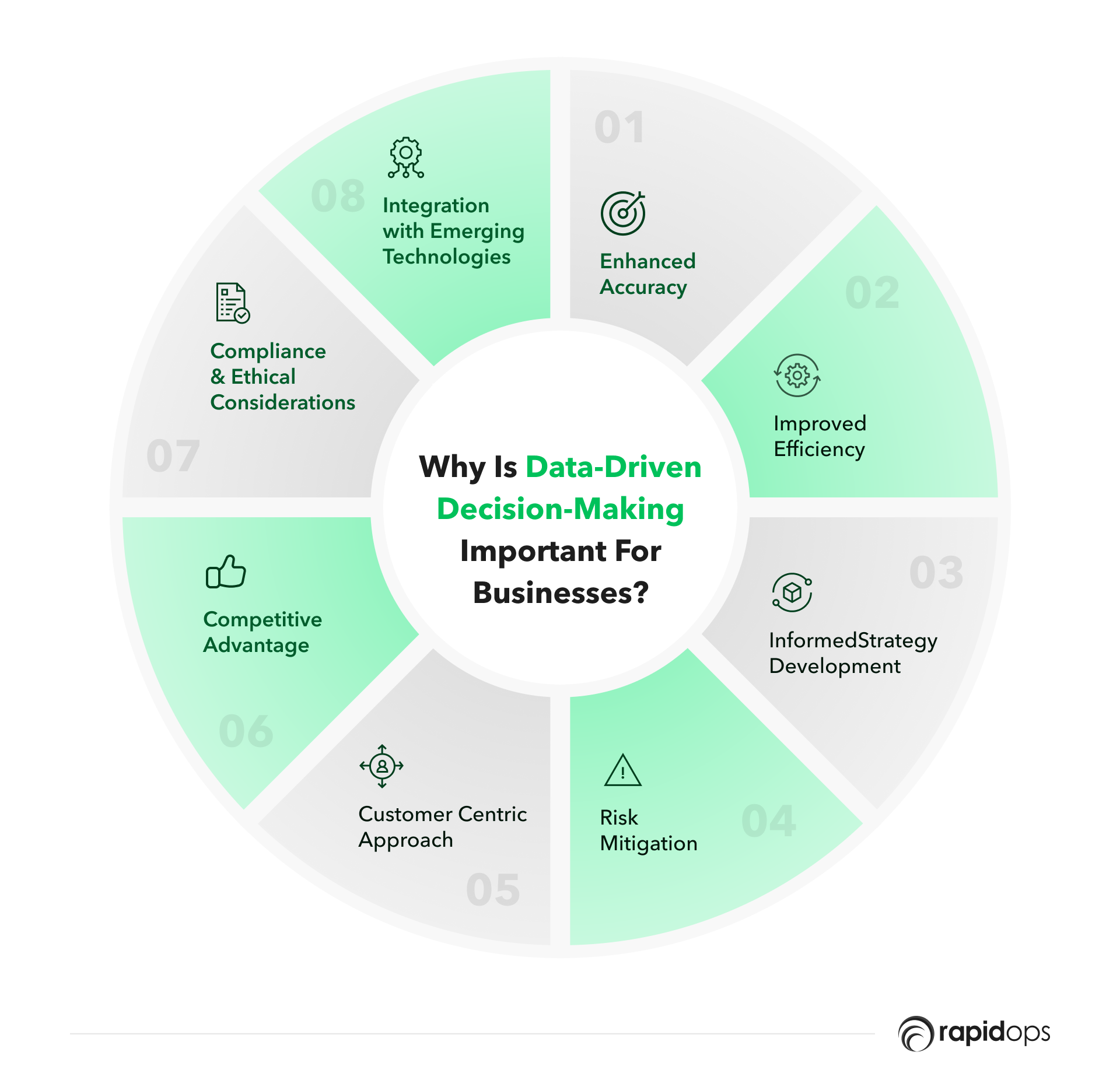
In an age where information is abundant and constantly changing, your business needs every advantage to stay ahead. Data-driven decision making (DDDM) may be the key to unlocking success and growth in this competitive landscape.
Here's why you should consider implementing DDDM in your organization:
1. Enhanced accuracy
By relying on actual, data-driven decisions, you can minimize human bias and error, making more precise and trustworthy decisions. You'll find clarity in the patterns and trends data reveals, leading to smarter choices.
2. Improved efficiency
You can quickly process large volumes of data with the right tools and techniques. This speed allows you to make informed decisions faster, saving time and resources and keeping your business agile.
3. Informed strategy development
Utilizing data helps you align strategies with current market conditions and customer needs. You'll have a clear insight into what works, enabling you to adapt and innovate effectively.
4. Risk mitigation
Data analytics helps you identify and understand potential risks. By recognizing these challenges, you can take measures to avoid or minimize them, protecting your investments and ambitions.
5. Customer-centric approach
Understanding customer behavior through data allows you to tailor products, services, and marketing to meet specific demands. This alignment enhances customer satisfaction and builds loyalty.
6. Competitive advantage
Leveraging data effectively gives you an edge over the competition. You'll be able to anticipate trends, optimize operations, and respond proactively to opportunities, all of which position you as a leader in your industry.
7. Compliance and ethical considerations
You must ensure data integrity and compliance with legal requirements. Doing so builds trust and a positive reputation among your customers and stakeholders.
8. Integration with emerging technologies
DDDM works hand-in-hand with artificial intelligence and machine learning. These technologies enhance your ability to interpret and analyze data further, leading to even more insightful and impactful decisions.
Benefits of implementing data-driven strategies
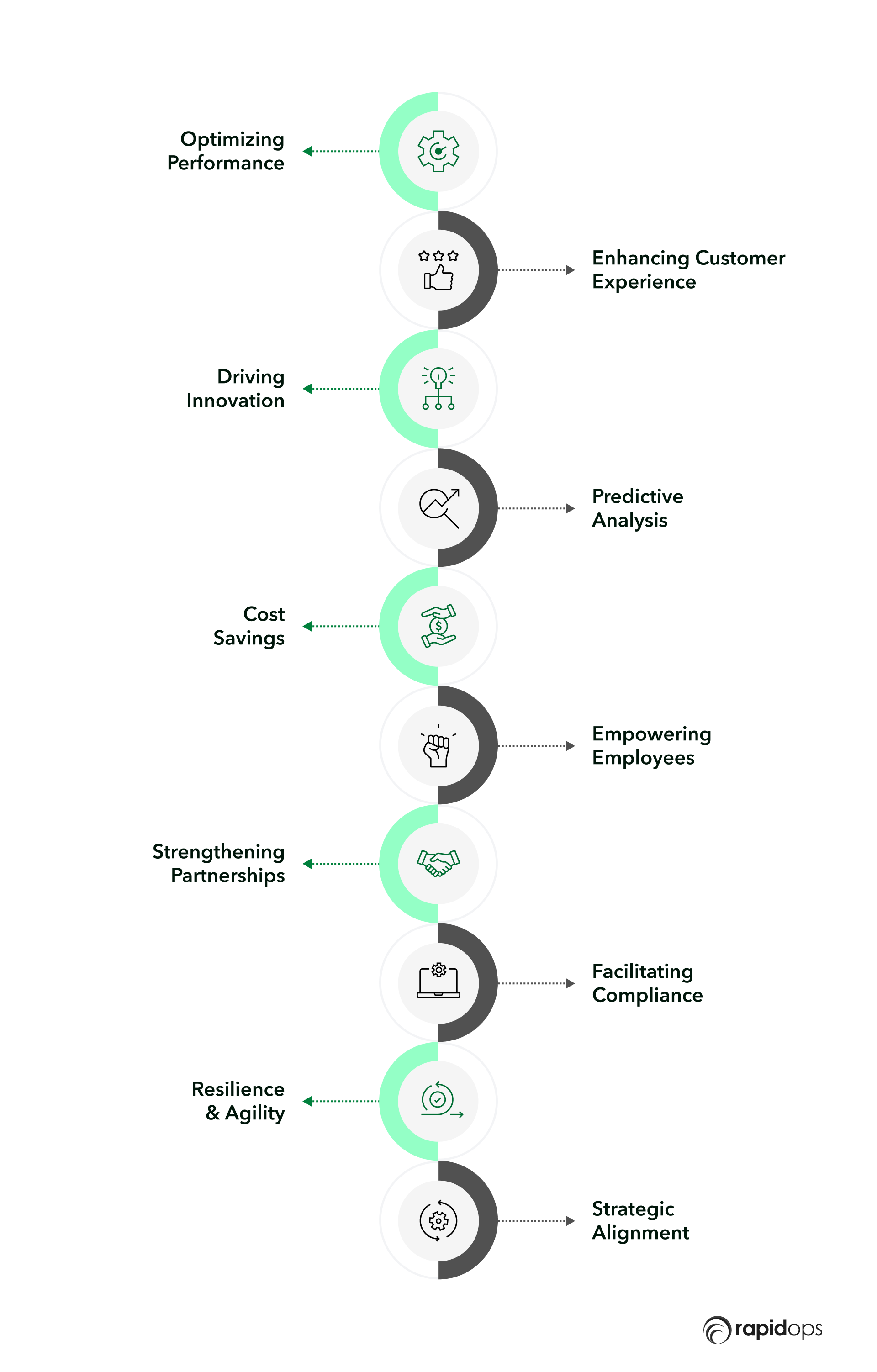
Now, let's dive into the benefits of implementing data-driven strategies in your organization. These advantages enhance your decision-making capabilities and lead to various improvements across your entire business.
1. Optimizing performance
You can continuously monitor performance and adjust as needed with real-time data analysis. This ensures that your operations run smoothly and efficiently, maximizing productivity.
2. Enhancing customer experience
By understanding customer behavior and preferences, you can personalize their customer experience. This leads to higher satisfaction and loyalty as you deliver what they want and need.
3. Driving innovation
Data unlocks new insights, ideas, and opportunities. It fosters creativity and encourages you to explore uncharted territories, leading to innovative products, services, or business models.
4. Predictive analysis
You can forecast future business outcomes and trends by analyzing trends. This helps you stay ahead of the curve and make proactive decisions that align with future market demands.
5. Cost savings
With precise information, you can identify inefficiencies and wastage, allowing for a more effective allocation of resources. This leads to cost savings and a healthier bottom line.
6. Empowering employees
Data accessibility empowers your team to make informed decisions. It enhances collaboration and alignment, leading to a more engaged and effective workforce.
7. Strengthening partnerships
Sharing data insights with partners or suppliers can enhance collaboration and lead to synergies that benefit all parties involved. It builds stronger relationships and opens doors to new opportunities.
8. Facilitating compliance
Data-driven strategies allow better tracking and reporting, ensuring you meet regulatory requirements. This builds trust with regulators and stakeholders and safeguards your business reputation.
9. Resilience and agility
In a volatile market, being data-driven enables you to adapt quickly to changes. Whether it's a sudden shift in customer behavior or an unforeseen external event, you're equipped to respond and navigate challenges.
10. Strategic alignment
Data ensures that all decisions align with your overall business strategy and goals. It serves as a roadmap, guiding you toward your organization's most important objectives.
Five powerful strategies for data-driven decision making
Data-driven decision making (DDDM) is more than just a buzzword; it's critical to modern business success. Whether you're a small startup or a global corporation, the proper use of data can guide you to informed decisions that align with your business goals. Below are five powerful strategies that can steer you toward a more effective and efficient data-driven decision-making process:
1. Start with the right data: Data-driven innovation
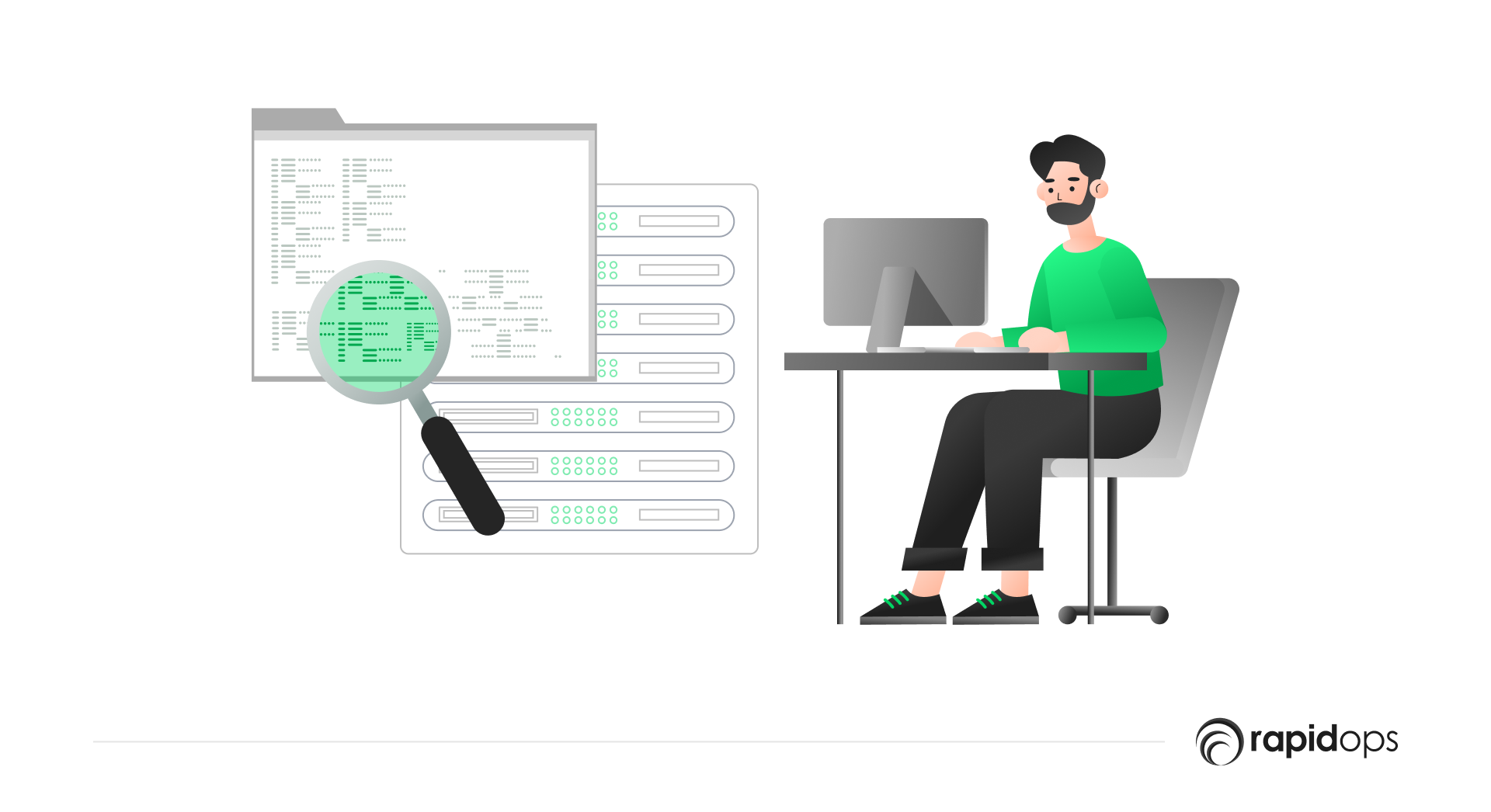
Identifying quality data sources - Being clear about goals
Starting with the right data points is paramount. You must identify quality data sources that align with your business goals. This entails:
- Understanding the problem you're trying to solve
- Defining clear objectives and key performance indicators (KPIs)
- Gathering data from relevant internal and external sources
- Ensuring the accuracy, consistency, and reliability of the data
Leveraging data for innovative solutions - Using multiple data sources
Data-driven innovation requires leveraging various data sets and sources to unearth unique insights:
- Combining different data types (e.g., qualitative and quantitative)
- Integrating data from multiple sources to create a holistic view
- Utilizing machine learning and AI to uncover hidden patterns
- Transforming insights into actionable strategies and innovative solutions
Real-world examples of data-driven innovation - Considering limitations and biases
Real-world examples showcase the practical application of data-driven innovation:
- Analyzing historical data to forecast future trends
- Identifying customer preferences to personalize offerings
- Recognizing potential risks and limitations
- Considering biases that may skew the data, leading to incorrect conclusions
2. Use the right tools: The data-driven decision-making process
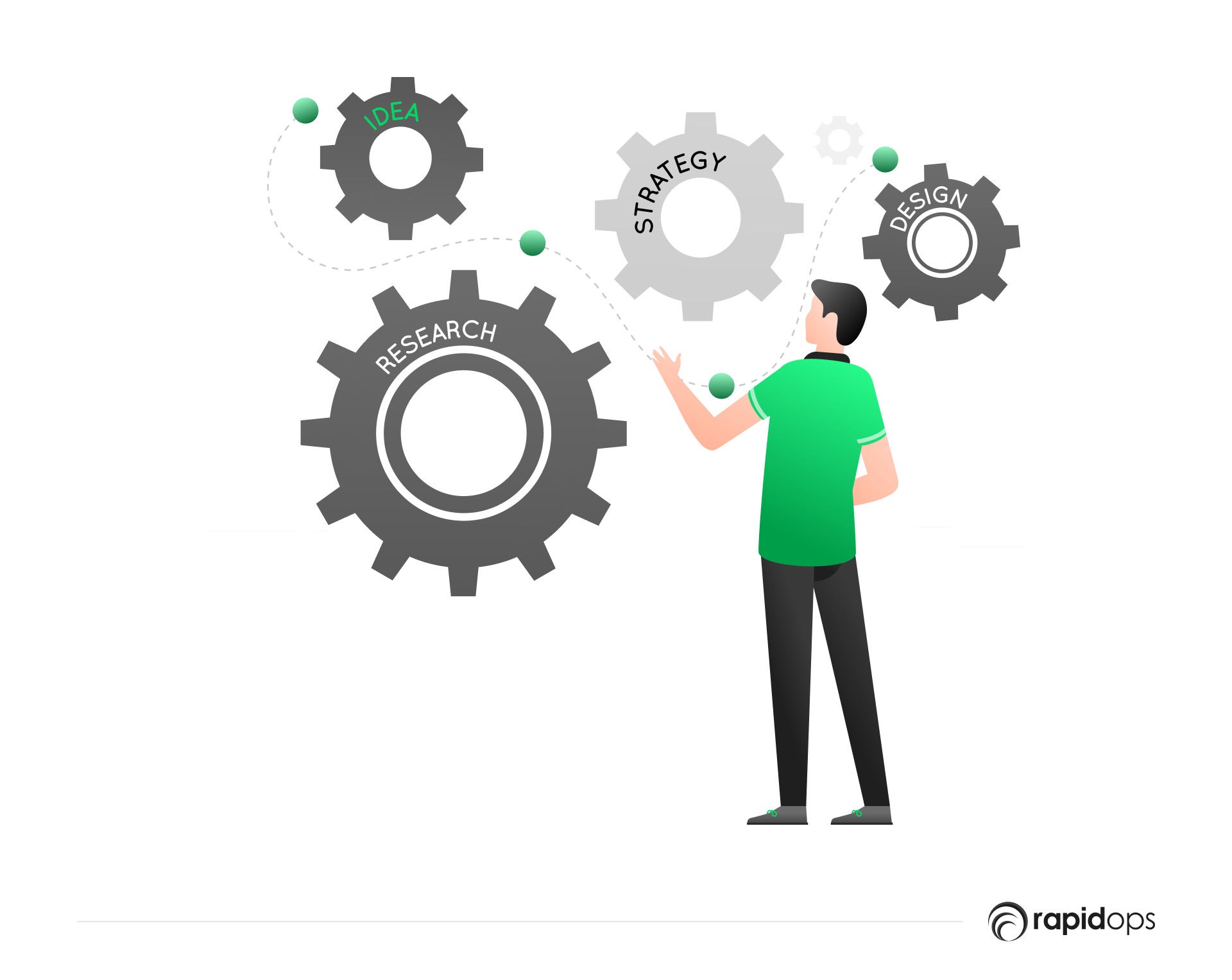
Implementing a data-driven decision-making process requires the use of the right tools. From data collection to analysis and visualization, having the right tools can make the process more efficient and the insights more actionable.
Overview of essential tools and platforms - Applying statistical methods
Choosing the right tools and platforms depends on your specific needs and objectives:
1. Data collection tools
Gathering quality data from various sources using tools like Google Analytics, SQL databases, or custom APIs.
2. Data analysis tools
Utilizing statistical methods and tools like R or Python for advanced analysis.
3. Data visualization tools
Representing data meaningfully through platforms like Tableau or Power BI to make insights more understandable.
Integration with existing systems
Integrating the tools with your existing systems ensures seamless operations:
- Compatibility: Ensuring the selected tools are compatible with existing infrastructure.
- Automation: Implementing automation where possible to streamline the process.
- Collaboration: Enabling collaboration between different departments through integrated systems.
Best practices for tool selection - Collaborating with experts
Selecting the best tools requires careful consideration and often collaboration with experts:
- Understanding needs: Identifying your needs and how the tools will meet them.
- Scalability: Considering future growth and ensuring the tools can scale with your business.
- Support & training: Evaluating the support and training available to maximize the benefits of the tools.
Employing the right tools that align with your objectives, integrate seamlessly with existing systems, and adhere to best practices will put you well on your way to a robust data-driven decision-making process.
3. Involve the right people: Data-driven problem-solving

Effective data-driven problem-solving is not just about tools and technologies; it's also about involving the right people. Engaging the necessary expertise, fostering collaboration among data teams, and managing challenges and biases are essential aspects of this strategy.
Building a data-driven culture
Creating a culture that values data and analytical thinking is vital:
- Encourage curiosity: Foster an environment where questioning and exploring data is encouraged.
- Provide training: Offer training and support to build data literacy across the organization.
- Reward insights: Recognize and reward individuals and teams that contribute valuable insights.
Collaborating with experts and stakeholders - Testing and validation techniques
Collaboration can drive better outcomes:
- Engage experts: Work with data scientists, analysts, and subject matter experts to derive meaningful insights.
- Involve stakeholders: Include business users and stakeholders in the process to ensure alignment with organizational goals.
- Test and validate: Regularly test and validate the findings with different stakeholders to ensure accuracy and relevance.
Managing potential challenges and biases
Being aware of and managing challenges and biases is critical:
- Identify biases: Recognize and address potential biases in data collection and analysis.
- Address challenges: Proactively address challenges such as data quality, integration, or privacy concerns.
- Establish guidelines: Create clear guidelines and governance to ensure the ethical and responsible use of data.
4. Continuously monitor and improve: Data-driven risk management
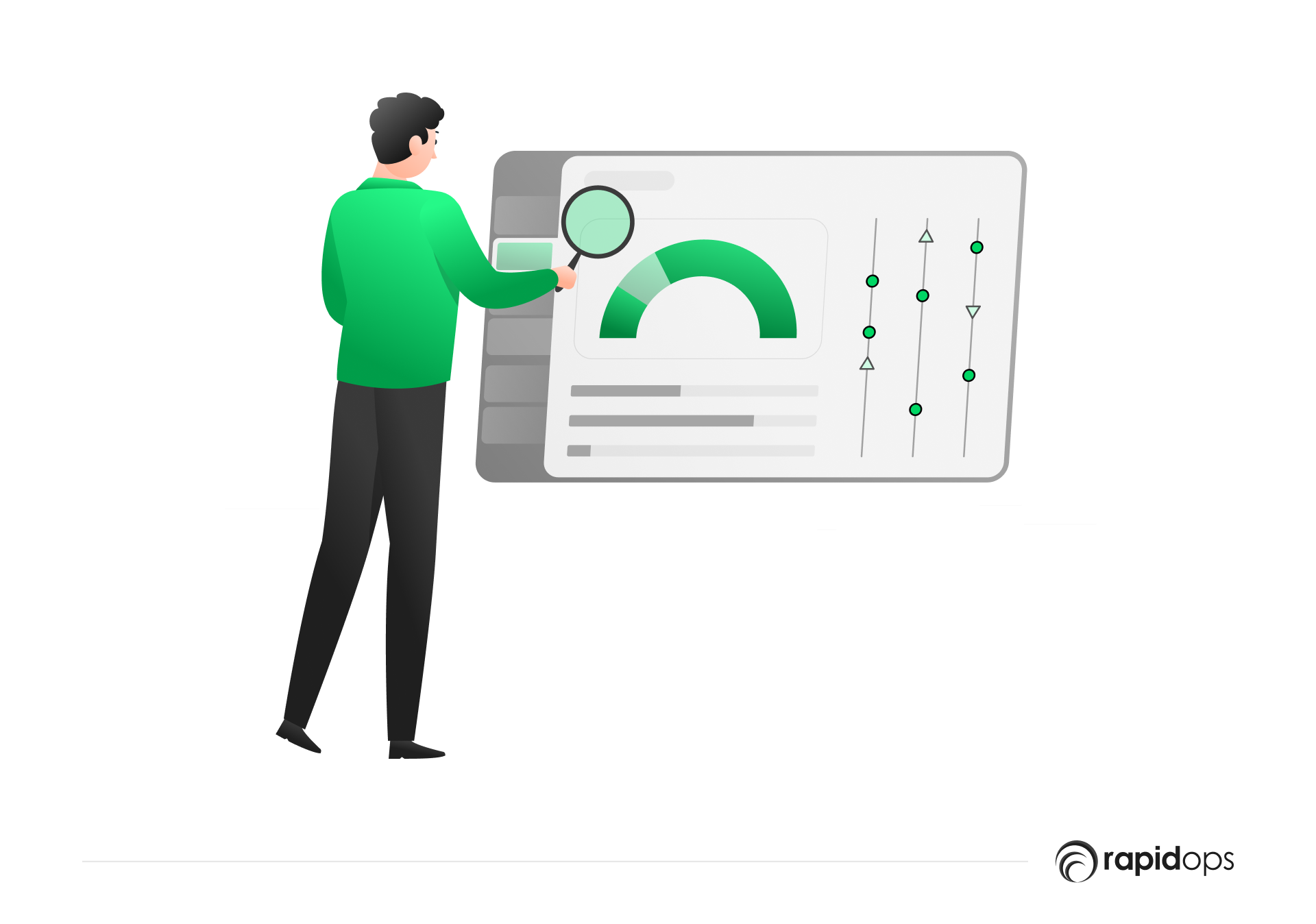
Continuous monitoring and improvement are essential for successful data-driven risk management in a rapidly changing environment. You can maintain control and direction by implementing proper data analytics, refining strategies, and managing uncertainty.
Implementing data analytics for risk assessment
Utilizing data analytics for risk management helps identify and mitigate potential risks:
- Analyze trends: Spot trends and anomalies in real-time to anticipate potential risks.
- Apply predictive models: Use machine learning and statistical models to forecast possible risk scenarios.
- Create risk profiles: Build comprehensive risk profiles using data to understand different risk factors.
Continuous improvement strategies
A commitment to continuous improvement will drive ongoing success:
- Review performance: Regularly assess performance and adapt strategies accordingly.
- Encourage innovation: Foster a culture where continuous improvement and innovative thinking are valued.
- Iterate and learn: Learn from successes and failures to iterate and enhance risk management strategies.
Managing Uncertainty and Complexity
Handling uncertainty and complexity requires robust strategies:
- Utilize scenario analysis: Employ different scenarios to understand how various factors might impact outcomes.
- Build flexibility: Develop flexible strategies to adapt to unexpected or complex changes.
- Implement robust systems: Create robust systems that can handle uncertainty without compromising efficiency.
5. Build customer-centric strategies: Data-driven marketing

Understanding and catering to customer needs is paramount in today's competitive business environment. Data-driven marketing enables you to craft personalized and effective marketing campaigns that resonate with your audience.
Understanding customer behaviors through data
To build a customer-centric strategy, you need to understand your customers:
- Analyze customer data: Utilize customer feedback, surveys, and purchasing behaviors to gain insights.
- Identify patterns: Recognize patterns and trends to understand what drives customer satisfaction.
- Segment audience: Divide your audience into distinct segments to tailor marketing efforts to specific needs.
Creating personalized marketing campaigns
Personalization is key to connecting with your customers:
- Use customer insights: Leverage insights from data analysis to create personalized content and offers.
- Automate personalization: Implement machine learning algorithms that can adapt content to individual preferences.
- Monitor engagement: Track customer interactions and adjust campaigns based on real-time feedback.
Measuring and optimizing marketing success
Continuous measurement and optimization ensure that your marketing efforts remain effective:
- Set clear KPIs: Establish clear Key Performance Indicators (KPIs) to measure the success of campaigns.
- Utilize analytics tools: Use data analytics tools to monitor campaign performance continuously.
- Iterate and improve: Regularly review and refine campaigns to enhance engagement and returns.
Empowering success through data-driven decision-making with Rapidops
Embrace the data revolution with Rapidops! We're your end-to-end data and AI partner, propelling you to a competitive edge through personalized experiences and process automation. Contact us now to fuel your journey towards innovation and success with data-driven decisions.
FAQs about data-driven decision-making
As we embark on a journey of clarity, let's navigate through the intricacies by addressing some of the most commonly raised questions about data-driven decision-making.
What are the benefits of data-driven innovation?
What are the common challenges in data-driven problem-solving?
How to choose the right data sources for data-driven strategies?
Can small businesses benefit from data-driven decision-making?
What role do experts play in data-driven decision-making?
How do I test and validate decisions made through data-driven processes?
Are there ethical considerations in data-driven decision-making?
What is the future of data-driven decision-making?
How does data-driven decision-making relate to artificial intelligence (AI)?
How to ensure security and compliance in data-driven decision-making?
What’s Inside
- What is data-driven decision-making (DDDM)?
- The importance of DDDM in today's world
- Key steps involved in data-driven decision-making
- Why is data-driven decision-making (DDDM) important for businesses?
- Benefits of implementing data-driven strategies
- Five powerful strategies for data-driven decision making
- Empowering success through data-driven decision-making with Rapidops
- FAQs about data-driven decision-making




